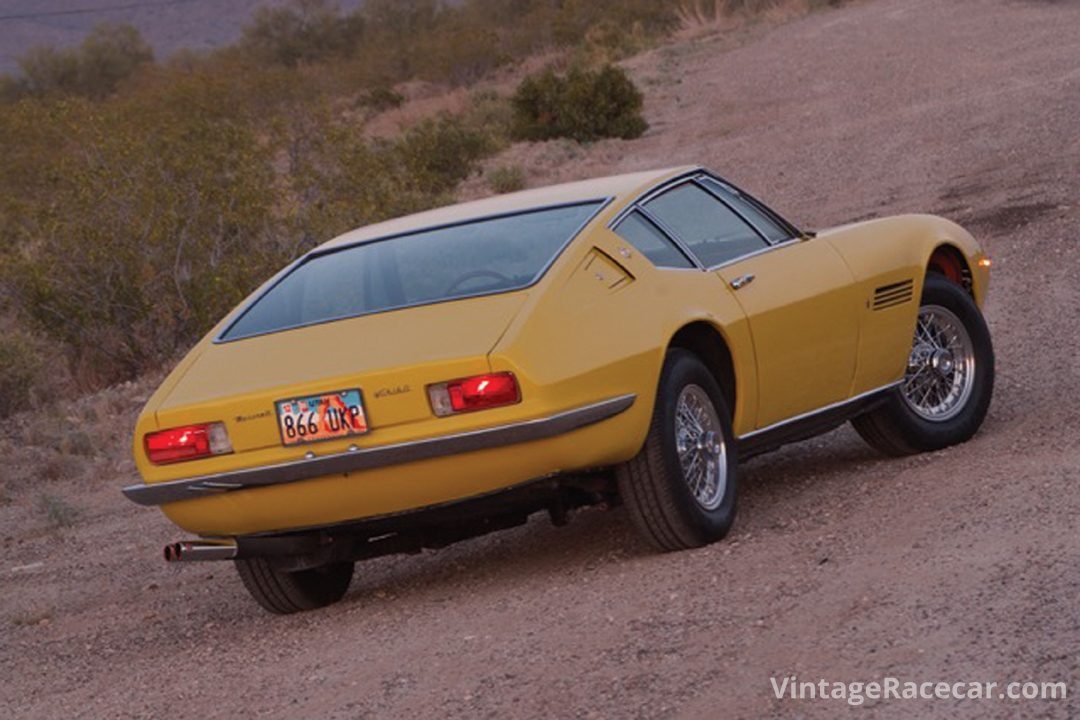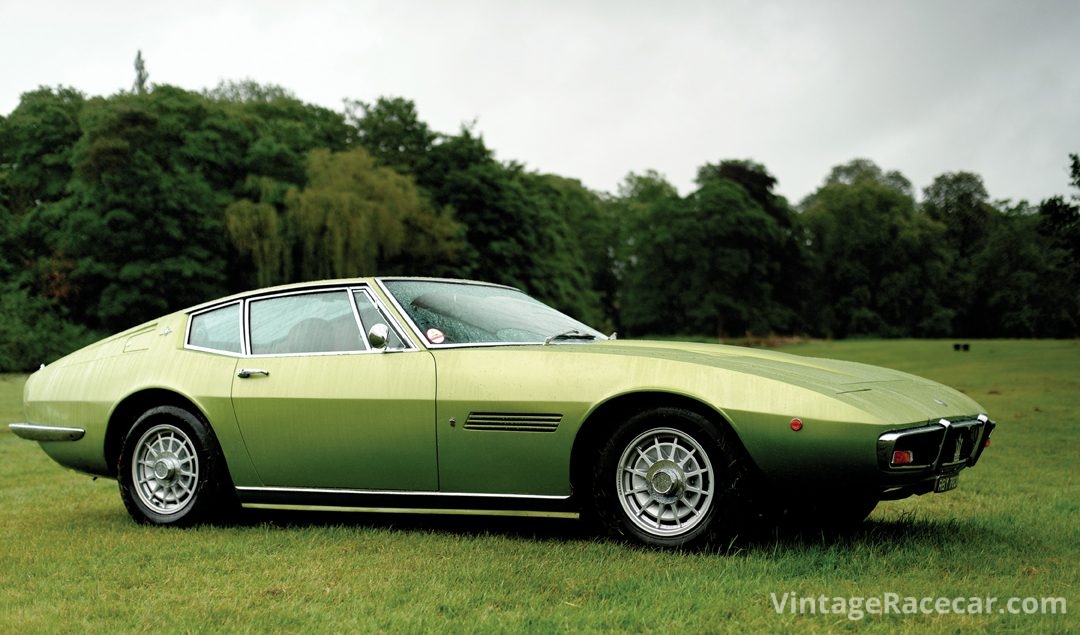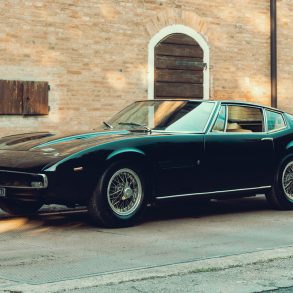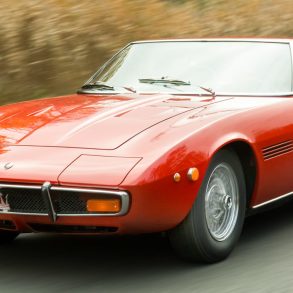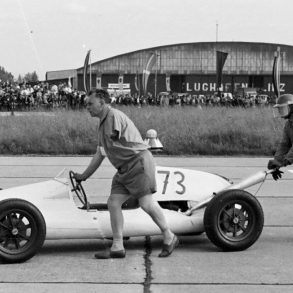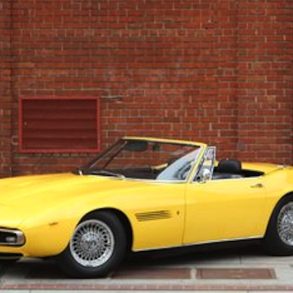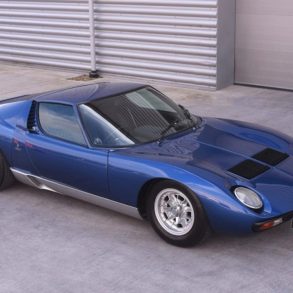The perfect blend of performance and blade-edged elegance
Georgette Giugiaro. The name alone evokes Italian beauty, energy, and excitement. Named “Designer of the Century” in 1999, Giugiaro would earn that honor having designed dozens of award-winning cars for nearly every major manufacturer. In 1959, the 20-year-old Giugiaro impressed Nuccio Bertone so much that even while he served his mandatory military service, Bertone supplied him the tools and rented a hotel room for Giugiaro to draw cars and mail his concepts back home to be built. After eight years working for Bertone, Giugiaro departed under an emotionally charged edict from Bertone. Nuccio was determined to hire budding talent Marcello Gandini. Giugiaro would have nothing of it. Giugiaro sought out prime Bertone competitor Ghia for a one-year contract. Although a short period of time, his creativity could not be contained and Giugiaro unleashed a stunning stream of four important cars (two of which would become the Mangusta and Ghibli) laying the groundwork for some of the most innovative body designs of the 1960s. These four cars critically set Ghia apart from the prevailing designs of other coachbuilders. It must be noted that Giugiaro achieved this design at what had to be one of the most personally and professionally challenging times of his young life—a tribute to his consummate professionalism and dedication to car design.
Ghia debuted the Maserati Ghibli to a stunned public at the prestigious 1966 Turin Motor Show. The advanced styling incorporated surprisingly flat body panels, folded and chiseled details, hidden headlights, steep and sweeping glass, and none of the rotund undulations found in the aging Ferrari 275GTB and other premier sports car offerings. The Ferrari Daytona would not arrive for another two years, and thus the Ghibli would prevail not only with its 170 mph top speed, four-wheel disc brakes, 330 hp DOHC V8 engine, and independent front suspension; it would also defy traditional proportions, sitting very low (roofline measuring just under 46 inches) and stretching out with a commanding 71-inch width. Immediately following the release of the production Ghibli, Giugiaro would depart Ghia to start Italdesign, his own firm—a design studio that retains his family presence to this day.
Aptly named for the exotic Saharan desert winds, the Ghibli evoked an instant sense of mystery and power, yet the mechanical features were just as provocative as the body design. The V8 engine delivered a competition voice, in part due to the race-bred dry sump oil system, but also featured several technical advances. The four-cam, 90-degree V8 (derived from the 450S sports racer and used in the 5000GT), allowed for a very low hood line. With the hood line lowered and width increased, Ghia engineers were able to place the driver and passenger in a more aggressive seating position, employing a dramatically lowered roofline. The frontal area of the new flat paneled architecture resulted in a narrow profile and a wind-cheating front fascia, sporting a wide but narrow grille and wafer-thin, perimeter-style bumper. At the rear of the car, Giugiaro accentuated the low profile with a fast roofline highlighted by expansive rear glass, terminating in an effective aerodynamic Kamm-back tail. Giugiaro leveraged these numerous technical advances to deliver a car like no other on the market. Accommodating these new proportions, the Ghibli used a Quattroporte tubular steel chassis, shortened and fitted with live rear axle and leaf springs, favoring a more reliable suspension. The substantial engine torque, coupled with reliability, smooth shifting ZF 5-speed gearbox, and commanding presence made the Ghibli one of the finest GTs available at the time.
Perhaps the most intriguing aspect of the Ghibli, however, is the unmistakable sensuality of the overall design. Here is a car that exhibits angularity and crispness in every view, and yet the overall form envelopes the wheels in a distinctly sinewy and seductive way. Like an athlete in a well-tailored tuxedo, the musculature is taught and facile, but moves gracefully in every view. Rare too is the visual result of the convertible. Generally speaking, the closed version of most GT cars will be preferred over the open design. This is not the case with the Ghibli. Instead we find that both versions uniquely present a perfectly balanced car with tailored details that simply cannot be improved upon. Lastly, nearly every color offered from the factory, from bright red to metallic blue, metallic orange, acid green, etc., all present the Ghibli’s beguilingly curvaceous architecture in a captivating way.
The smartly styled Ghibli still lives up to the fantastic reputation it set the day it debuted on the stage at the 1966 Turin Motor Show. Giugiaro created this masterpiece of design under tremendous personal and professional pressure to serve both performance and beauty. Fifty years later, the enduring Ghibli remains, and rightly so, on everyone’s list as one of the most beautifully designed automobiles of all time.




